How Many Baby Wipes Do I Need? The Ultimate Guide for New Moms
As a new mom, your mind is probably buzzing with a million questions. One of the most common, yet surprisingly complex, queries is, “How many baby wipes do I need?” You might think it’s just about changing diapers, but wipes serve so many purposes that getting the right amount can make a big difference in your daily routine. In this ultimate guide, we’ll explore every aspect of baby wipes, so you’ll be fully prepared for what’s ahead.
Why Baby Wipes Are a Lifesaver
Baby wipes are a modern parenting essential. Gone are the days of using damp cloths or running to the sink every time your baby makes a mess. Baby wipes are convenient, hygienic, and portable, making them a must-have in every parent’s arsenal. But why exactly are they so important?
- Convenience: Whether you’re at home or on the go, wipes offer a quick and easy way to clean up messes.
- Hygiene: Wipes are pre-moistened with gentle cleansers, which helps keep your baby’s skin clean and fresh.
- Versatility: From cleaning tiny hands to wiping down surfaces, baby wipes are incredibly versatile.
- Gentleness: Most wipes are formulated to be gentle on delicate baby skin, reducing the risk of irritation.
The Factors Affecting Wipe Usage
Before we can answer how many wipes you’ll need, it’s important to understand the various factors that can influence your usage:
1. Baby’s Age
Younger babies tend to go through more wipes due to more frequent diaper changes. As your baby grows, you might find that you’re using fewer wipes, but the type of messes you’re cleaning up can be more varied (think sticky hands and faces).
2. Diet
A baby’s diet can also affect how many wipes you’ll use. For instance:
- Breastfed Babies: They tend to have softer, more frequent bowel movements, especially in the early months, which might increase wipe usage.
- Formula-Fed Babies: Their bowel movements can be less frequent but more substantial, sometimes requiring more wipes per change.
- Solid Foods: Once your baby starts eating solids, you might notice a change in the consistency of their bowel movements, which can also impact how many wipes you’ll need.
3. Skin Sensitivity
If your baby has sensitive skin, you might find yourself using more wipes—or switching to a gentler or hypoallergenic brand. Babies with skin conditions like eczema may require more frequent changes and specialized wipes to avoid irritation.
4. Lifestyle and Environment
Your lifestyle can also play a big role in how many wipes you’ll need. For example:
- On-the-Go: If you’re frequently out and about, you might use more wipes for quick clean-ups.
- At Home: You might use fewer wipes at home if you have access to washcloths, water, or a sink.
- Multiple Children: If you have more than one child in diapers, your wipe usage will naturally increase.
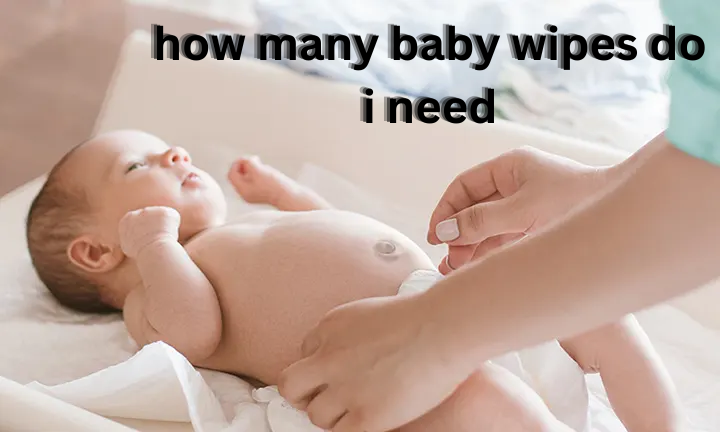
Daily and Monthly Wipe Usage Estimation
To make things clearer, let’s break down the estimated number of wipes you might need on a daily and monthly basis, depending on your baby’s age:
Newborns (0-3 months)
- Diaper Changes: 10-12 times a day.
- Wipes Per Change: 2-3 wipes.
- Total Wipes Per Day: 20-36 wipes.
Example: If your newborn needs 11 diaper changes daily, and you use an average of 3 wipes per change:
- Daily Wipes: 11 x 3 = 33 wipes
- Weekly Wipes: 33 x 7 = 231 wipes
- Monthly Wipes (30 days): 33 x 30 = 990 wipes
Infants (3-12 months)
- Diaper Changes: 8-10 times a day.
- Wipes Per Change: 2-3 wipes.
- Total Wipes Per Day: 16-30 wipes.
Example: For a 6-month-old needing 9 diaper changes a day with 2 wipes per change:
- Daily Wipes: 9 x 2 = 18 wipes
- Weekly Wipes: 18 x 7 = 126 wipes
- Monthly Wipes (30 days): 18 x 30 = 540 wipes
Toddlers (12 months and up)
- Diaper Changes: 4-6 times a day.
- Wipes Per Change: 2-4 wipes.
- Total Wipes Per Day: 8-24 wipes.
Example: For an 18-month-old needing 5 diaper changes a day with 3 wipes per change:
- Daily Wipes: 5 x 3 = 15 wipes
- Weekly Wipes: 15 x 7 = 105 wipes
- Monthly Wipes (30 days): 15 x 30 = 450 wipes
Monthly Wipe Usage Comparison Table
Here’s a table summarizing the estimated wipe usage for different stages of your baby’s development:
| Baby’s Age | Diaper Changes per Day | Wipes per Change | Total Wipes per Day | Total Wipes per Week (7 days) | Total Wipes per Month (30 days) |
|---|---|---|---|---|---|
| Newborn (0-3 months) | 10-12 | 2-3 | 20-36 | 140-252 | 600-1080 |
| Infant (3-12 months) | 8-10 | 2-3 | 16-30 | 112-210 | 480-900 |
| Toddler (12+ months) | 4-6 | 2-4 | 8-24 | 56-168 | 240-720 |
Pro Tip: Always buy a little more than your calculations suggest. It’s better to have extra wipes on hand than to run out in the middle of a diaper change.
Types of Baby Wipes
There are several types of baby wipes available, each with its own set of benefits. Here’s a breakdown:
1. Unscented Wipes
- Best For: Babies with sensitive skin or those prone to allergies.
- Features: Free from added fragrances, which can sometimes irritate sensitive skin.
- Brands to Consider: WaterWipes, Pampers Sensitive.
2. Scented Wipes
- Best For: Parents who prefer a pleasant scent during diaper changes.
- Features: Infused with mild fragrances; check ingredients to ensure they’re safe for your baby.
- Brands to Consider: Huggies Natural Care Refreshing Wipes.
3. Eco-friendly Wipes
- Best For: Eco-conscious parents looking to reduce their environmental footprint.
- Features: Made from biodegradable materials, often free from harsh chemicals.
- Brands to Consider: Seventh Generation, The Honest Company.
4. Water Wipes
- Best For: Newborns and babies with ultra-sensitive skin.
- Features: Typically made with 99.9% water and a drop of fruit extract; extremely gentle.
- Brands to Consider: WaterWipes.
5. Hypoallergenic Wipes
- Best For: Babies with allergies or extremely sensitive skin.
- Features: Formulated without common allergens, often tested by dermatologists.
- Brands to Consider: Aveeno Baby, Babyganics.
Storage Tips for Baby Wipes
Proper storage of baby wipes can make them last longer and keep them fresh:
- Seal the Package: Always close the package tightly after each use to prevent the wipes from drying out.
- Cool, Dry Storage: Store wipes in a cool, dry place, away from direct sunlight and heat, to maintain their moisture.
- Use Wipe Dispensers: Invest in a wipe dispenser to maintain moisture and make access easier during those busy moments.
Budgeting for Baby Wipes
Baby wipes are a recurring expense, so it’s essential to budget for them. Let’s break down the costs:
Cost Per Pack
- Average Pack Size: 56-80 wipes.
- Average Cost: $2-$4 per pack.
Monthly Cost Estimation
Using the wipe usage estimates from the table above:
- Newborns (600-1080 wipes/month): Approx. 10-20 packs/month = $20-$80/month.
- Infants (480-900 wipes/month): Approx. 8-16 packs/month = $16-$64/month.
- Toddlers (240-720 wipes/month): Approx. 4-12 packs/month = $8-$48/month.
Tip: Look for bulk deals or subscribe to delivery services to save money in the long run.
Baby Wipes and the Environment
With the growing concern about environmental sustainability, it’s essential to consider the impact of baby wipes on the planet. Here’s what you should know:
1. Biodegradability
Most traditional baby wipes are made from synthetic fibers, making them non-biodegradable. These wipes can take hundreds of years to decompose in landfills.
Solution: Opt for eco-friendly, biodegradable wipes made from natural materials like bamboo or cotton.
2. Chemical Ingredients
Some baby wipes contain chemicals like alcohol, parabens, and fragrances that can harm the environment and your baby’s skin.
Solution: Choose wipes free from harmful chemicals, or consider making your own (more on that below).
3. Packaging Waste
The plastic packaging of baby wipes is another environmental concern. While some brands offer recyclable packaging, most still contribute to plastic waste.
Solution: Support brands that use sustainable packaging or consider buying in bulk to reduce the frequency of purchases.
READ MORE:
DIY Baby Wipes: A Sustainable Alternative
If you’re concerned about the environmental impact of disposable wipes or want to save money, making your own baby wipes is a fantastic option. Here’s a simple recipe to try at home:
What You’ll Need:
- Soft Cloths: You can use old t-shirts, washcloths, or pre-cut fabric squares.
- Water: Preferably distilled or boiled and cooled.
- Natural Cleanser: A few drops of baby soap or mild liquid soap.
- Coconut Oil: To keep the wipes moist and add a natural barrier against diaper rash.
- Essential Oils (Optional): For a pleasant scent, use baby-safe essential oils like lavender or chamomile.
- Container: A reusable container with a lid to store your wipes.
Instructions:
- Prepare the Solution: In a small bowl, mix 2 cups of water, 1 tablespoon of baby soap, 1 tablespoon of coconut oil, and a few drops of essential oil.
- Cut the Cloths: Cut your chosen fabric into wipe-sized squares.
- Soak the Cloths: Place the cloths in a container and pour the solution over them until they’re fully saturated.
- Store: Keep the container sealed and use the wipes as needed. They should stay fresh for about a week.
Benefits:
- Eco-Friendly: Reusable wipes significantly reduce waste.
- Cost-Effective: DIY wipes are cheaper than store-bought options.
- Customizable: Tailor the ingredients to suit your baby’s needs.
Common Concerns and FAQs About Baby Wipes
As a new mom, you might have specific concerns about using baby wipes. Here are some of the most frequently asked questions:
1. Can Baby Wipes Cause Diaper Rash?
While most baby wipes are designed to be gentle, some babies may have sensitive skin that reacts to certain ingredients. To reduce the risk of diaper rash:
- Choose wipes that are alcohol-free, fragrance-free, and hypoallergenic.
- Always pat your baby’s skin dry after using wipes before putting on a new diaper.
- If your baby is prone to diaper rash, consider using water wipes or homemade wipes.
2. Are Baby Wipes Safe for Newborns?
Yes, baby wipes are generally safe for newborns, but it’s crucial to choose the right type. Newborn skin is delicate, so opt for wipes specifically designed for sensitive skin or those made with minimal ingredients, like water wipes.
3. How Can I Tell If a Wipe Is Causing Skin Irritation?
Signs of irritation can include redness, dryness, or small bumps on your baby’s skin. If you notice these symptoms:
- Stop using the current wipes immediately.
- Switch to a hypoallergenic or water-based wipe.
- Consult your pediatrician if the irritation persists.
4. Can I Use Baby Wipes to Clean My Baby’s Face?
Yes, many baby wipes are safe to use on your baby’s face, especially those that are fragrance-free and hypoallergenic. However, always be gentle and avoid the eyes. Some parents prefer to use specific face wipes that are even milder than regular baby wipes.
5. How Do I Dispose of Baby Wipes?
Most baby wipes should not be flushed down the toilet, as they can cause blockages. Dispose of used wipes in the trash, or if using biodegradable wipes, consider composting them if they’re made from natural fibers and free from harsh chemicals.
Baby Wipes for Other Uses
Did you know that baby wipes can be incredibly useful beyond diaper changes? Here are some creative ways moms use baby wipes:
1. Quick Clean-Ups
From spills on the go to wiping down sticky hands, baby wipes are perfect for quick clean-ups when you’re out and about.
2. Removing Makeup
Baby wipes can be a gentle, convenient way to remove makeup in a pinch. However, they might not be as effective as dedicated makeup remover wipes, so follow up with a proper cleanser.
3. Freshening Up
After a workout or during a long day, baby wipes can be a refreshing way to freshen up when you don’t have access to a shower.
4. Cleaning Surfaces
Use baby wipes to wipe down shopping cart handles, restaurant high chairs, or even your phone screen. They’re gentle and won’t leave behind a residue.
5. Craft Clean-Up
If you’re doing arts and crafts with your little one, baby wipes are great for cleaning up paint, glue, or other messy materials from hands and surfaces.
Brands to Consider: A Detailed Comparison
With so many brands on the market, choosing the right baby wipes can be overwhelming. Here’s a detailed comparison of some of the most popular baby wipe brands, based on factors like cost, ingredients, and performance.
1. Pampers Sensitive Wipes
- Ingredients: Free from alcohol, parabens, and latex; contains a mild lotion to help protect baby’s skin.
- Performance: Strong and durable; cleans well with fewer wipes.
- Cost: Moderate, but often available in bulk packs for better value.
2. Huggies Natural Care Wipes
- Ingredients: 99% water with a touch of aloe and vitamin E; free from alcohol and parabens.
- Performance: Thick and gentle; great for sensitive skin.
- Cost: Affordable, especially when purchased in bulk.
3. WaterWipes
- Ingredients: 99.9% water and a drop of fruit extract; ideal for newborns and sensitive skin.
- Performance: Extremely gentle; slightly thinner, so you might need to use more.
- Cost: Higher price point, but worth it for those with very sensitive skin.
4. The Honest Company Wipes
- Ingredients: Plant-based, hypoallergenic; free from alcohol, parabens, and fragrances.
- Performance: Thick and durable; effective for both diaper changes and general clean-up.
- Cost: On the higher end, but often available in subscription bundles.
5. Seventh Generation Wipes
- Ingredients: Made with 100% plant-based fibers; free from fragrance, alcohol, and parabens.
- Performance: Soft and gentle; might require more wipes for tougher messes.
- Cost: Moderately priced, with a focus on eco-friendliness.
Personal Stories: Real Moms Share Their Experiences
Hearing from other moms can be incredibly helpful when navigating the world of baby wipes. Here are some personal stories from real moms who’ve been in your shoes:
1. Emma’s Story: The Newborn Stage
“When my son was born, I had no idea how many wipes I would go through! I started with a big box of 800 wipes, thinking it would last at least a couple of months, but I was back at the store by week three. I quickly learned that buying in bulk was the way to go, especially during those early weeks when I was changing 10-12 diapers a day.”
2. Sarah’s Story: Sensitive Skin Challenges
“My daughter had really sensitive skin from the start. We tried a few different brands, but she kept getting rashes. Finally, we switched to WaterWipes, and the difference was night and day. They were so much gentler on her skin, and we didn’t need to use as many wipes per change because they were so effective.”
3. Leah’s Story: Toddler Troubles
“By the time my twins hit toddlerhood, I was using wipes for everything—diaper changes, wiping hands and faces, cleaning up after meals, you name it. We went through wipes like crazy, so I always had a pack in the car, in my bag, and in pretty much every room of the house. Honestly, I couldn’t live without them!”
4. Maria’s Story: DIY Success
“I wanted to reduce our waste, so I decided to try making my own wipes. It was surprisingly easy, and I loved knowing exactly what was going on my baby’s skin. Plus, it saved us a ton of money. We still use disposable wipes when we’re out, but at home, it’s all DIY.”
Conclusion
So, how many baby wipes do you need? The answer depends on your baby’s age, diet, skin sensitivity, and your family’s lifestyle. By considering all these factors, you can estimate how many wipes you’ll need and ensure you’re always prepared.
Whether you choose store-bought wipes, make your own, or a combination of both, being informed about your options will help you make the best choice for your baby and your budget. Remember, it’s always better to have too many wipes
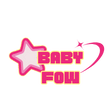
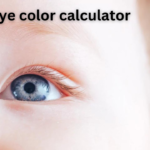
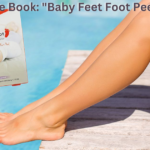
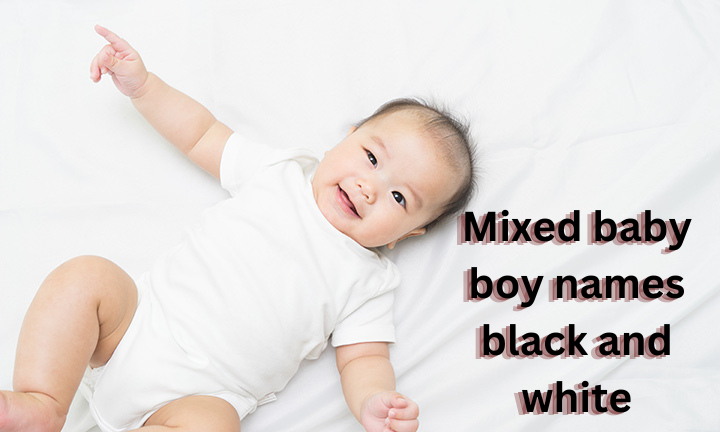




Pingback: Exploring The Book: "Baby Feet Foot Peel" - Babyfow.com